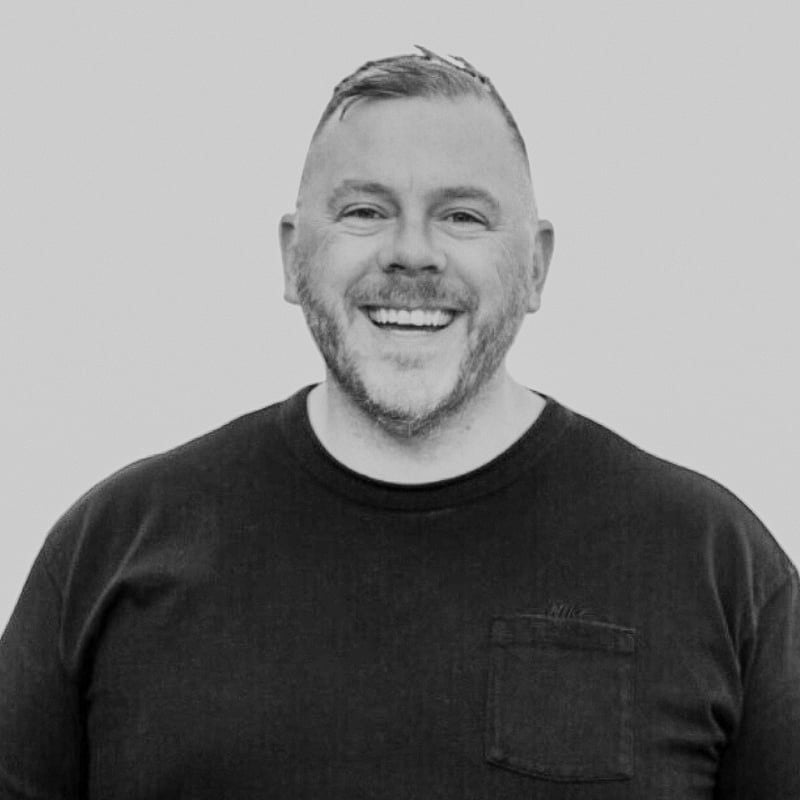Table of Contents
Creating an Effective Marketing Campaign for Your Roofing Business
In this article, you will learn our tried and tested method for launching marketing campaigns that drive real results. Watch Adam Sand cover this subject in a 5 minute video packed with valuable information and practical tips you can implement for your business today! Additionally, you will have the opportunity to download our zip file of designs that you can repurpose for your business today!
How to Plan Roofing Marketing Campaigns:
1. Developing Your Offer Value
- Importance of having a compelling offer: Let's face it, have you ever met a roofing company that charged for estimates? Neither have we! That means offering free estimates is not a promotion or an offer! That's why it's so important to have a rotating set of offers you can promote throughout the year!
- Examples of effective offers in the roofing industry: There are 3 different types of promotions that we have seen our clients be successful with. Price, Financing, and Giveaways! When planning your offer, you have to consider your market. A financing promotion may not be the most effective in an insurance market. It’s a good idea to check out some competitors and see what kind of offers they are promoting. Think of some of the most common objections you get from customers. Is it price related? Material? This is great insight for what offer you can promote that your customers are already asking for.
- Tips for creating urgency and scarcity: When running a promotion, urgency is one of the most important pieces to it! The goal is to get people to act fast! Make sure you have a clear ending date for your promotions!
.png?width=840&height=411&name=napkin-selection%20(3).png)
2. Creating Supporting Content
- 2.1 Writing an Informative Blog Post
- Purpose of the blog post in your marketing campaign: While most promotions should be fairly self explanatory, there are times where you need to provide more information about it. This is most common when running some form of promotion that involves material upgrades or free material. While you may know the difference between a class 3 and a class 4 shingle, most homeowners do not! Nor do they know the benefits of a ridge vent. A blog is a great way to explain the benefits of this, all while also giving you some SEO juice for your site!
- Key elements to include in your blog post: The blog post should be simple and straight to the point. Use bulleted points to describe the benefits and why the promotion is so special. Infographics are great assets to include in blogs. They are easy to read and are engaging!
- 2.2 Designing an Effective Infographic
- Benefits of using infographics in marketing: As much as we enjoy talking about it, most people don't find roofing as fascinating as we do! That means you have to be able to describe something in a very short amount of time and make it as simple as possible to understand.
- Key elements to include in your infographic: Benefits, processes, and how things work should be the main focus of your infographics!
- Tips for creating visually appealing and informative infographics: Think more kids book and less building manual. This should be easy to follow. Avoid using industry jargon or getting too technical with them. Lastly, don't forget your brand! This is a great place to incorporate it! If your mascot is a bull, have a talking bull explaining the graphic!
3. Building Your Campaign Infrastructure
- 3.1 Crafting a Targeted Landing Page
- Purpose of a dedicated landing page: A landing page is one of the most important components to a promotion. Unless you are trying to offer this to anyone who visits your website, you should be driving paid traffic to a specific landing page that has all of the information on the promotion, along with any supporting content to get people to take action!
- Essential elements of an effective landing page: A landing page should not be confusing. The promotion should be front and center, along with a way for customers to redeem this. Wether that's a contact form or a button to call. The page should also include supporting content such as a video explaining the promotion, google reviews and client testimonials to earn trust, other pertinent information to the promotion such as when it ends, or the value of the promotion.
- Tips for optimizing your landing page for conversions: Have the contact form at the very top of the page, don't make people get to the bottom to reach out. Less is more for landing pages. Don't overload it with too much information. It’s also a good idea to not have any links that take customers elsewhere, including the header menu. This ensures people don't get distracted with other pages and contact you to learn more!

- 3.2 Designing a Thank You Page
- Importance of a well-designed thank you page: One of the most underrated things you can do is create a custom thank you page for the promotion. This page serves as a confirmation of the promotion, along with giving customers a sense of completion.
- Key elements to include on your thank you page: If you did not include them on your landing page, this is a great place to showcase some reviews. While the customer already reached out to you, adding some trust to their decision to reach out to you helps ensure they pick up the phone when you call! That blog you made is another great thing to add. The landing page should not go into every detail, that's what the blog is for! Having them read it after they have reached out can help solidify the importance of the promotion and increase the likelihood of them working with you.
- 3.3 Creating a Marketing Email
- Purpose of the marketing email in your campaign: Just like the thank you page, a follow up email is a small, but an incredibly effective way of ensuring the customer remains engaged. It is possible that they submitted their information with more than one company. If you are the only company that they received an email from, your chances of them remembering you have gone up substantially! Thus leading to a higher appointment rate, and hopefully, close rate!
- Essential components of an effective marketing email: This person is halfway sold, so you don't need to go overboard here. Keep it brief. Thank them for reaching out. Explain to them what steps come next. (i.e; you will call them shortly to book the appointment, you will meet with the adjuster, etc) and a brief reminder of the promotion and when it ends!
- Tips for improving email open and click-through rates: Add some personalization tokens to the email. Customers are much more likely to open an email that says: "Thank you Kathy!" than "Thank you for contacting us".
4. Ensuring Legal Compliance
- Importance of clear terms and conditions: When planning a promotion, It’s important to think of the 'worst case scenario'. You don't want to lose your A** on a projected because you didn't consider all possibilities. These should ideally live somewhere in the landing page so you can point back to them in a scenario where you can't honor the promotion. But also not so obvious on the page that It’s going to scare people away.
- Key elements to include in your terms and conditions: Limits on material, for example; "up to 150ft of free gutters", or specification on the materials you will use. You don't want someone reading free gutters and thinking they are getting any product they want. You may also want to mention specific areas where the promotion is valid. You never know if someone will send the page to someone out of your service area. Lastly, anything else that would void the promotion. Roof pitch type, age of roof, etc.
5. Designing Ad Creatives
- Overview of different ad types you will need: There are lots of different ad types that you may need to successfully run a promotional campaign.
- Facebook Ads: Video talking about the promotion. Both vertical and horizontal formats to serve on all ad placement options. Static images for the promotion as well.
- Google Ads: Google display ads are a cheap and easy way to target, and retarget your audience. There are a variety of different sizes you can use for these. Here are the current sizing options.
- Youtube Ads: The same ads used on Facebook should be uploaded to Youtube and can be ran as an ad using Google ads.
- Mailers: Direct mail can be a great medium for promoting your offer. Companies like Dope Marketing make it easy to target the right audience and they even offer creative services.
- Billboards: Take your promotion to the next level with a billboard! These can be great for getting people's attention while on their way to work!
.png?width=759&height=598&name=napkin-selection%20(4).png)
6. Implementing Your Campaign
- Steps to launch your marketing campaign: Once you have all your assets in place, you're ready to start your campaign. This step is of course the most crucial. Here you will decide:
- Ad Platforms: Which platforms you will use to promote your offer. Google, Facebook, etc.
- Targeting: Where you will run this promotion. Specific cities, regions, or even customer demographics! Perhaps you only want to target a specific income range, or even gender with this promotion!
- Budget: It’s important to have a budget set for the promotion. This will generally dictate what platforms you market on and how many different channels.
- Tips for monitoring and optimizing your campaign performance: A/B testing is always a good idea when running a promotion. Test out a variety of different creatives to see which one performs better. Of course, you want to make sure that you are making decisions based on enough data. We recommend you run all creatives for at least 2 weeks before making any changes.
- Importance of continuous testing and improvement: Chances are, your first promotion may not go as well as you hoped for, but if done right, you should have at the bare minimum learned something! Perhaps you saw a region that responded better to the promotion, or one of the marketing channels was a complete dud. Learn from the things that did and didn't work and document these somewhere for the next time you run the promotion. Marketing is all about acquiring data and making decisions based on that data to improve!
Conclusion
The key to a successful marketing campaign is all in the planning!
.png?width=1156&height=1018&name=napkin-selection%20(5).png)
- Develop your offer
- Create supporting content
- Build your campaign infrastructure
- Ensure legal compliance
- Design your ad creatives
- Implement your campaign
- Monitor and Improve
Click Here To Download Your Free Asset
Looking for ad inspiration, or examples of infographics we have made in the past! Download our ad swipe file!
Related Resources

"How Roofers Can Use Online Courses to Grow Their Business in 2023"
As a roofing company in the digital age, it is essential to leverage technology to stay competitive and reach new heights in the industry.
.png?width=200&height=86&name=RBP_Logo-Design_02%20(1).png)

 Adam Sand
Adam Sand


